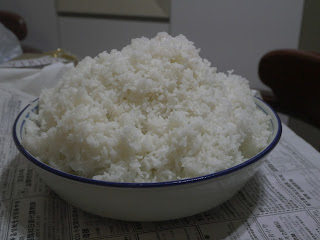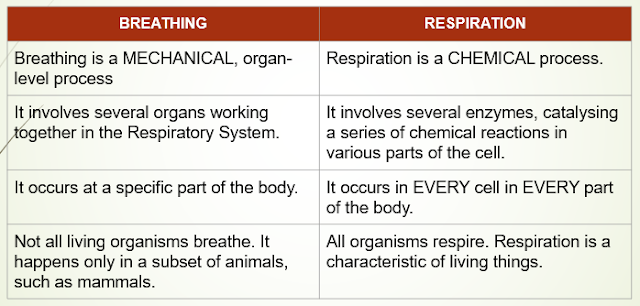THE NUTRIENTS [CSEC BIOLOGY & HSB]
SYLLABUS REFERENCE
HSB
- [B1.1] distinguish between macro and micronutrients;
- [B1.2] discuss the functions of macronutrients;
- [B1.3] discuss the functions of micronutrients;
- [B1.4] state the cause, symptoms, and treatments of deficiency diseases;
- [B1.5] classify vitamins as fat- or water-soluble
CSEC BIOLOGY
[B2.11] discuss the importance of a balanced diet in humans;
- Components of a balanced diet (macro- and micronutrients)
NUTRIENTS AND THEIR SOURCES
FOOD IS A SOURCE OF NUTRIENTS.
Different foods would have different combinations of nutrients, in varying proportions.
For example...
A NUTRIENT IS A CHEMICAL OBTAINED FROM FOOD, THAT IS USED BY THE BODY TO PROVIDE ENERGY AND/OR MAINTAIN HEALTH.
YOUR 'DIET' IS THE QUANTITY AND QUALITY OF NUTRIENTS OBTAINED FROM FOOD YOU EAT ON A REGULAR BASIS.
THE MACRONUTRIENTS
Carbohydrates
These provide mainly energy.
- They are chemical compounds which are made up of carbon (C), hydrogen (H), and oxygen (O).
- Food sources are sugars and starches.
- Sugars are an immediate source of energy. Food sources include fruit and honey
- Starches are more complex carbohydrates, that were used as food storage in plants. They release energy after consumption more slowly than sugars, having to go through the digestive process. Food sources include potatoes, bread and cereals.
- Carbohydrates are classified as either mono-, di- or polysaccharides.
Proteins
These help to maintain health, facilitate repair and provide energy.
- They are chemical compounds which are made up of C, H, O and nitrogen (N). Some proteins include phosphorus (P) and sulphur, in addition.
- Proteins are polymers which are made up of units of amino acids. About 20 amino acids across the living world, in a wide variety of combinations.
- Proteins can be compact and soluble or fibrous and insoluble. The protein's properties are determined by the sequence of amino acids.
- Food sources include:
- Animal: meat, fish, eggs, and milk
- Plant: beans (including soybeans), peas, groundnuts and other legumes.
Note that plant proteins have a high proportion of a narrow range of amino acids. Animal proteins have the complete range of 20 amino acids. Plants, however, are a cheaper source of protein. Animals are costly to keep and they do not grow as quickly as plants.
The Many Roles of Proteins
Maintain life and health
- facilitate the growth of new cells, as proteins are a major component of cell parts
- enzymes, which control the chemical reactions in the cells, are proteins
- many other crucial molecules, such as insulin and haemoglobin, are proteins
Repair
- facilitate the repair and replacement of cells
- agents of the clotting and healing process are proteins
Energy
Several of the amino acids can be further broken down via respiration to produce energy in the form of ATP.
Lipids (Fats and Oils)
They provide mainly high density energy storage and insulation
- They are chemical compounds made up of C, H, and O.
- They are available in solid (fats) or liquid (oils) form.
- The most common lipid is triglyceride, which is made up of glycerol and 3 fatty acids
- Its main role is high-density storage of energy and insulation/protection of organs
- It is a cheap source of energy and a solvent for A, D, E and K vitamins
- Food with lipids in them are retained in the stomach for longer, so you feel satisfied.
- Another common lipid is phospholipid. It is a major component of cell membranes in most organisms.
- Food sources include butter, lard, pork, peanuts, avocado and palm oil seeds.
THE MICRONUTRIENTS
 |
| VITAMIN ROLES AND SOURCES |
 |
| MINERAL ROLES AND SOURCES |
THE DEFICIENCY DISEASES
DEFICIENCY DISEASES ARE CAUSED BY THE LACK OF NUTRIENTS IN THE DIET.
DEFICIENCY DISEASES ARE TREATED VIA A BALANCED DIET AND BY GIVING DIETARY SUPPLEMENTS, SUCH AS MULTIVITAMIN PILLS.
Lack of Vitamin A - Night Blindness
- Receptors in the eye, known as rods, do not work properly. The patient is thus unable to detect light of low intensity.
- With serious deficiency, the front of the eye becomes cloudy, and light cannot pass through easily.
Lack of Vitamin D - Rickets
- Bones become soft and tends to bend outward under the strain of body weight.
- Children and women that do not go outside into the sunshine or wear clothes that completely cover the body are most at risk.
Lack of Iron - Iron Deficiency Anaemia
- The red blood cells contain less haemoglobin, so less oxygen is transported to the cells.
- Oxygen is necessary for respiration, so less energy is made available to the cells.
- The patient gets tired easily, with slowed growth and development.
- Female persons are most at risk, due to menstruation.
Lack of Iodine - Goitre
- Swelling of the neck due to an enlarged thyroid gland, located around the voice box. 90% of goitres are due to iodine deficiency.
- The thyroid gland enlarges to compensate for reduced production of thyroxine.
- If allowed to stay for more than 5 years, the swelling may become permanent.






